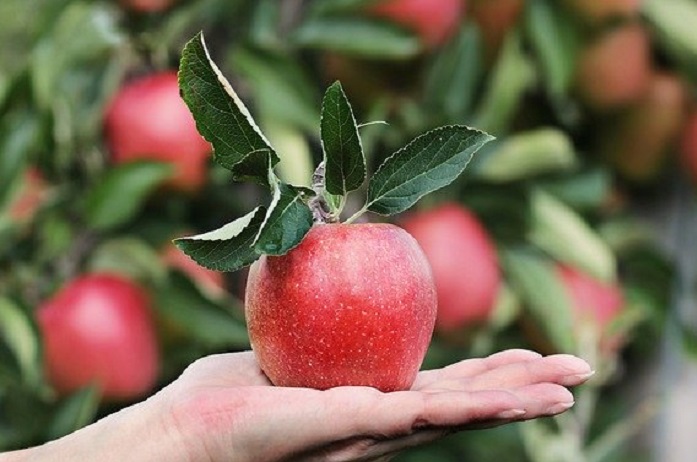Researchers conducted a comprehensive analysis of scientific studies identifying a link between the dietary intake of the polyphenol phloridzin and type 2 diabetes risk.
Type 2 diabetes is a chronic disease, characterized by the body’s resistance to insulin and high levels of blood sugar.
This disease is managed by maintaining a healthy diet, which includes plenty of fruits and vegetables, and regular physical activity.
Several recent studies suggest an association between the consumption of apples and the decreased risk of type 2 diabetes.
Apples contain phloridzin, a polyphenol that is naturally found in the apple skin and the bark of the apple tree. According to several studies, phloridzin inhibits glucose transporters in the kidney and intestines, which leads to reduced uptake of sugar from the intestines.
These studies suggest phloridzin may be beneficial in preventing type 2 diabetes.
In a recent study, researchers from Europe conducted a comprehensive analysis of previous scientific studies to investigate the association between the amount of phloridzin that is naturally found in different food sources and the dietary intake of these particular foods.
The study evaluated five cohort studies with over 220 000 participants and around 14000 cases involving type 2 diabetes.
The researchers identified the foods that naturally contained phloridzin and the concentrations of phloridzin in each food item. They also collected data on food consumption by people in European countries. The information was obtained from publicly available databases.
Using the information on phloridzin concentrations in each food and linking them to the consumption data, the researchers calculated the intake of naturally occurring phloridzin, by the participants.
The study reports that Mexican oregano contains the highest concentrations of naturally occurring phloridzin.
However, the highest consumption of phloridzin by the participants came from apples and apple juice. The researchers found that the largest intake of phloridzin was contributed by the consumption of apple juice, followed by apples in all population groups.
The risk of type 2 diabetes increases with age and older people above the age of 45 are found to be at a much higher risk of developing this disease.
However, the study reported that the intake of phloridzin by the elderly was reduced in comparison to the rest of the population.
The findings suggest that consuming foods containing naturally occurring phloridzin may help reduce the risk of developing type 2 diabetes.
The results of this study suggest that managing blood sugar levels may be improved by the dietary intake of phloridzin. However, more research is needed to clarify the possible benefits of increasing the intake of foods containing phloridzin and the potential for reducing type 2 diabetes risk.
Written by Ranjani Sabarinathan, MSc
Relevant topics that may be of interest to you:
- Are zinc supplements for diabetes beneficial?
- Top Seven Type 2 Diabetes Medications
- Pomegranate Seed Oil to Treat Metabolic Syndrome, Inflammation, and Diabetes
- Diet soda and pregnancy – is it safe?
- Can Fitbit Help with Diabetes?
- Wild Blueberry Juice Reduced the Risk of Stoke in Type 2 Diabetic Patients
References:
Niederberger, K., Tennant, D., & Bellion, P. (n.d.). Dietary intake of phloridzin from natural occurrence in foods. British Journal of Nutrition, 1-24. doi: 10.1017/S0007114520000033
Type 2 diabetes https://www.diabetes.ca/recently-diagnosed/type-2-toolkit
Image by S. Hermann & F. Richter from Pixabay



